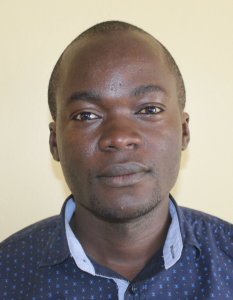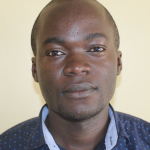Jeptulu Primary School has a whopping population of 1040 students and 31 teachers without a reliable, safe way to get their needed water throughout the year. The daily struggle to access sufficient water is a burden that rests heavily on the students' shoulders, quite literally.

A few water sources are available to the school, yet each has specific issues that pose significant risks.
There is a rain tank on the school grounds, but it depends on the rains and is unusable during the dry season. Even when it rains, and the tank fills with such a large population, it drains quickly, forcing students to search elsewhere for water.

The other option is for students to walk to a nearby unprotected spring by crossing a dangerous road. Collecting water here is a slow, tedious process, wasting students' time that should be used in class learning. And to top it off, the water they spend so much time collecting puts everyone who consumes it at risk of water-related illnesses since it is not filtered properly.
"The other alternative source which pupils use is [a] partially unprotected spring. The source is open to contamination, hard to access because of [the] terrain of the land, and more [challenging is] the distance which is far and dangerous when crossing the road," said field officer Victor Musemi.
"I have been a teacher for this school for a long period of time. Really we have suffered as a school. [The] majority of our pupils miss lessons getting water from outside the school, and this as a teacher is really demoralizing me as I cannot teach [a] few pupils [and] leave [the] others. [In] the month of January this year we really got many complaints from our pupils about stomachaches. This raised concerns [for] the entire [staff], as we forced pupils to seek medication before coming back to school," said teacher Antony Masioli, shown below collecting water from the unprotected spring.

“Having been given a chance to study in this school, I was a happy person, never knowing the challenges [the] school is facing. I have encountered problems related to water, especially when the tank lacks water, thus forcing us to collect water from other sources outside the school, which is tiresome," said 12-year-old Stacia I., shown below refilling the school's kitchen water containers.

"Surely I can’t concentrate in class when the teacher is teaching. I remember last term, during [our] exam time, we were forced to collect water before doing exams and this demoralized me. I didn’t perform [well during] the exam [because] my mind was not set at that time due to tiredness," she concluded.

Installing a well on Jeptulu's campus will enable students like Stacia and teachers like Antony to have plenty of water to drink and improve the school's learning environment. Then with water, everyone can concentrate on learning, and students will have time to dream and be hopeful about the future.
Water at schools is unique, which is why we need unique solutions.
The Proposed Solution, Determined Together...
At The Water Project, everyone has a part in conversations and solutions. We operate in transparency, believing it benefits everyone. We expect reliability from one another as well as our water solutions. Everyone involved makes this possible through hard work and dedication.
In a joint discovery process, community members determine their most advantageous water solution alongside our technical experts. Read more specifics about this solution on the What We're Building tab of this project page. Then, community members lend their support by collecting needed construction materials (sometimes for months ahead of time!), providing labor alongside our artisans, sheltering and feeding the builders, and supplying additional resources.
Water Access for Everyone
This water project is one piece in a large puzzle. In Kenya, Sierra Leone, and Uganda, we're working toward complete coverage of reliable, maintained water sources that guarantee public access now and in the future within a 30-minute round trip for each community, household, school, and health center. One day, we hope to report that this has been achieved!
Training on Health, Hygiene & More
With the community's input, we've identified topics where training will increase positive health outcomes at personal, household, and community levels. We'll coordinate with them to find the best training date. Some examples of what we train communities on are:
- Improved hygiene, health, and sanitation habits
- Safe water handling, storage & treatment
- Disease prevention and proper handwashing
- Income-generation
- Community leadership, governance, & election of a water committee
- Operation and maintenance of the water point
Handwashing Stations
Alongside each water source, we also provide two new gravity-fed handwashing stations that will allow everyone at the school to wash their hands without running water. Handwashing is so important to help prevent future water-related illnesses in the school community.
The student health club will maintain the stations, fill them with water, and supply them with soap (which we will teach the school community how to make during the training!).
VIP Latrines
In addition, we will construct two triple-door Ventilated Improved Pit (VIP) latrine blocks designed to prevent fecal disease transmission. Each latrine will have a cement floor, which is easy to use and clean regularly. Three doors will serve the girls, and three doors will serve the boys.




 Borehole Well and Hand Pump
Borehole Well and Hand Pump
 Rehabilitation Project
Rehabilitation Project

































